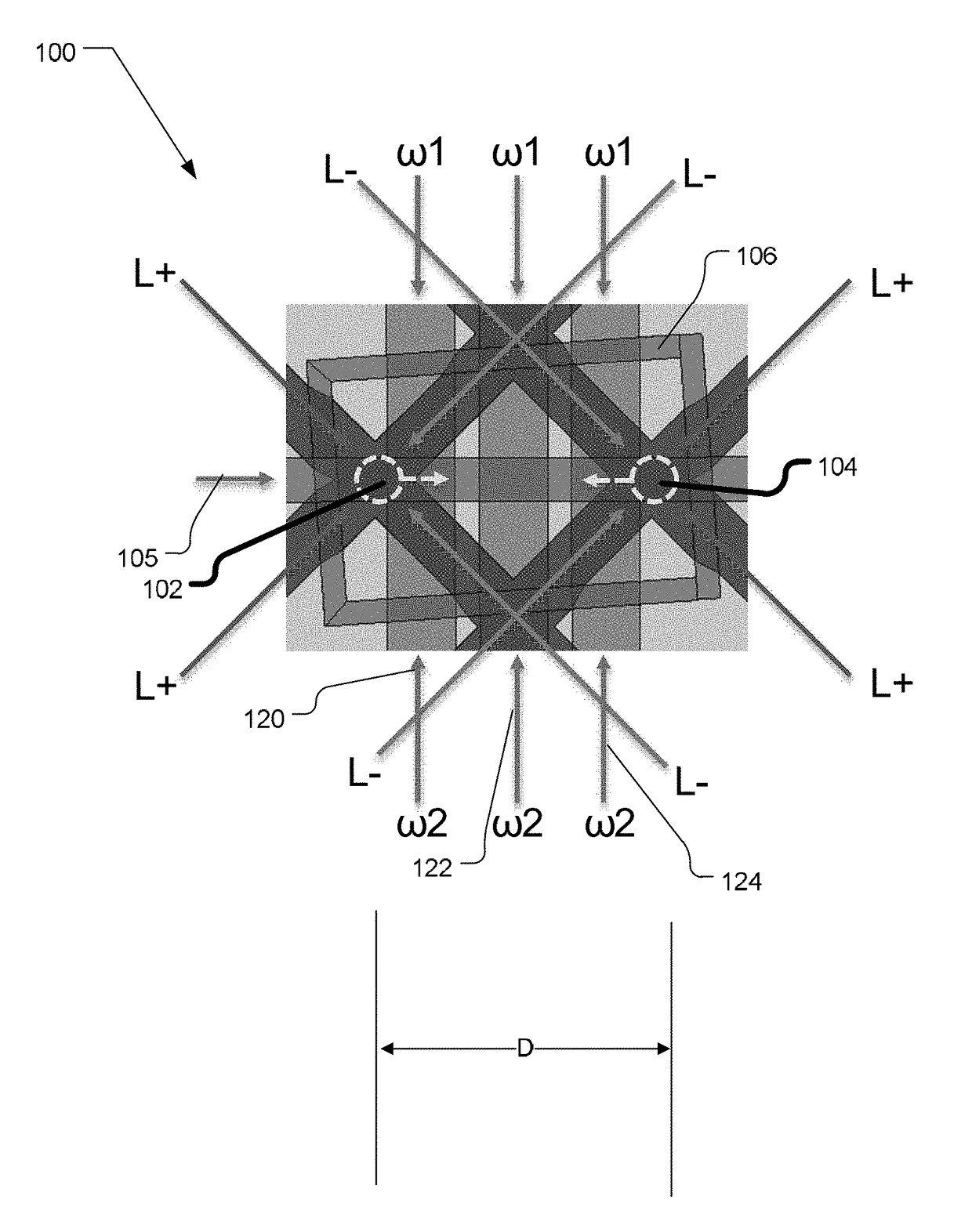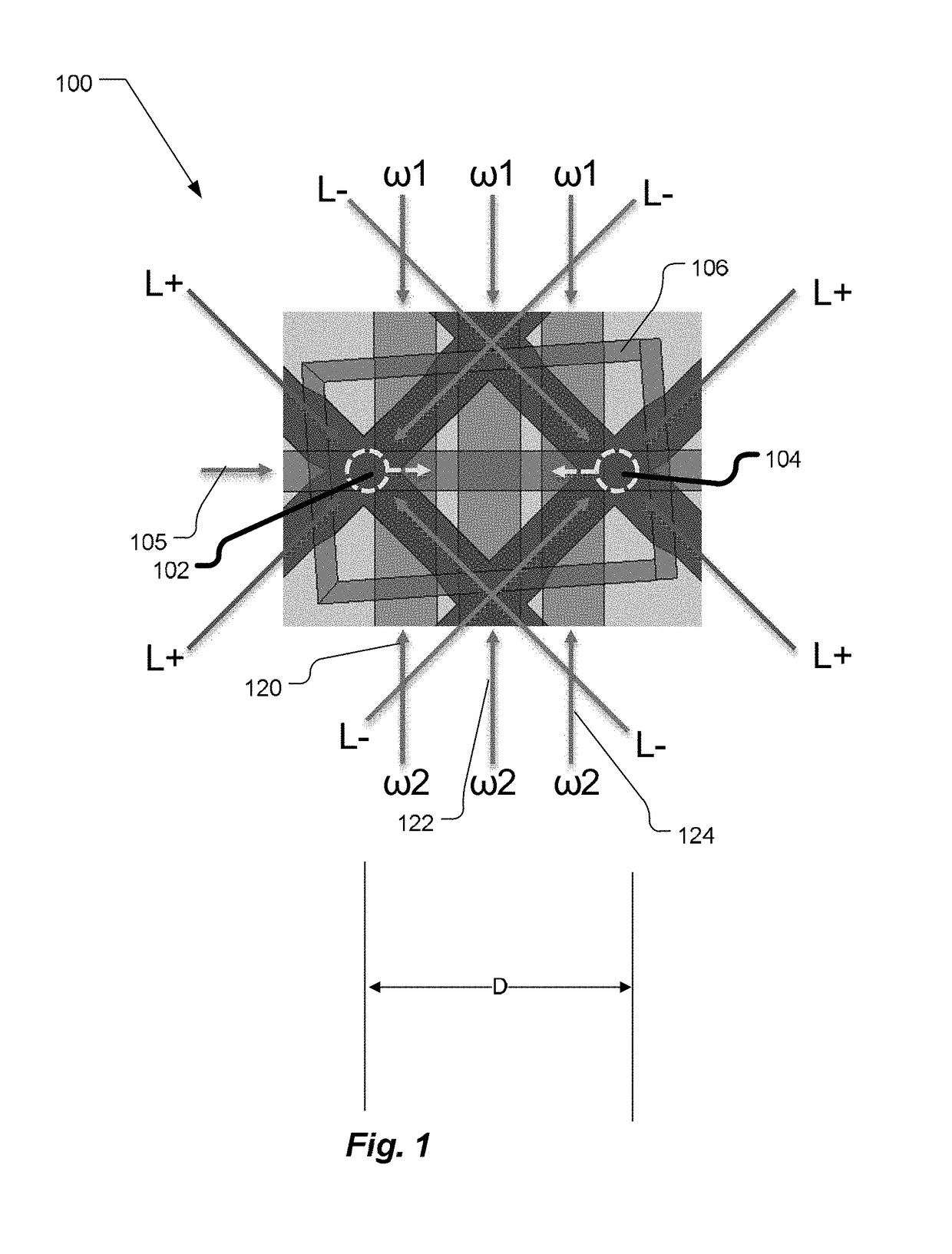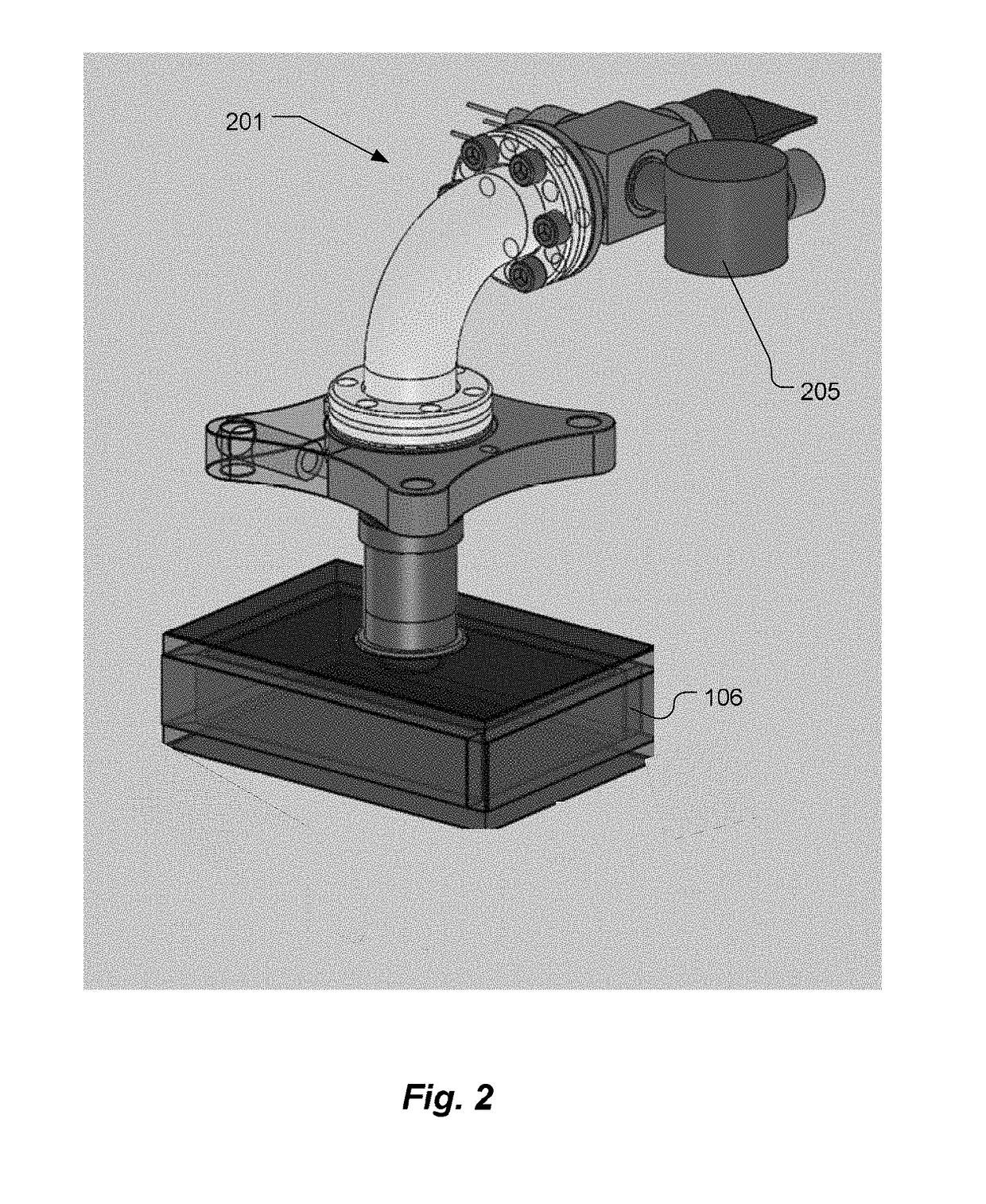Cold Atom Interferometry
a technology of cold atoms and interferometers, applied in the field ofatomic interferometers, can solve the problems of limiting system sensitivity, mechanically rigid geometries employed in single-trap designs that do not lend themselves to double-trap implementation, and the proximity of two mots in such configurations does not allow for the implementation of integral micromirror geometries
- Summary
- Abstract
- Description
- Claims
- Application Information
AI Technical Summary
Benefits of technology
Problems solved by technology
Method used
Image
Examples
Embodiment Construction
[0015]In accordance with embodiments of the present invention, an improvement is provided to measurement methods that have steps of trapping an ensemble of atoms and measuring interference fringes between populations of internal states of a quantum system based on interaction of the ensemble of atoms with a plurality of counterpropagating optical beam pairs. The improvement entails steps of:
[0016]coupling the plurality of counterpropagating beam pairs such that each pair of beams traverses the ensemble of atoms in parallel counterpropagating beam paths;
[0017]interposing a beam-splitting surface common to the plurality of counterpropagating beam pairs;
[0018]generating interference fringes between reflections of the plurality of parallel pairs of counterpropagating beams to generate a detector signal; and
[0019]processing the detector signal to derive at least one of relative phase and relative alignment between respective pairs of the counterpropagating beams.
[0020]In accordance with ...
PUM
 Login to View More
Login to View More Abstract
Description
Claims
Application Information
 Login to View More
Login to View More - R&D
- Intellectual Property
- Life Sciences
- Materials
- Tech Scout
- Unparalleled Data Quality
- Higher Quality Content
- 60% Fewer Hallucinations
Browse by: Latest US Patents, China's latest patents, Technical Efficacy Thesaurus, Application Domain, Technology Topic, Popular Technical Reports.
© 2025 PatSnap. All rights reserved.Legal|Privacy policy|Modern Slavery Act Transparency Statement|Sitemap|About US| Contact US: help@patsnap.com



